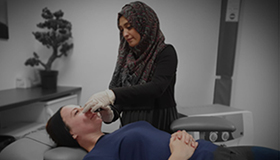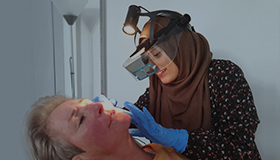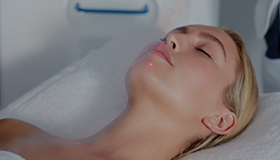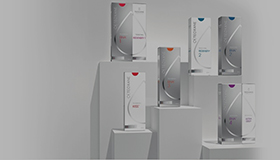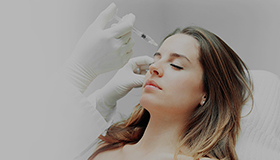THREAD VEINS
Thread veins, commonly known as telangiectasia, is a condition in which widened venules (tiny blood vessels) cause threadlike red lines or patterns on the skin. These patterns, or telangiectases, form gradually and often in clusters. They’re sometimes known as “spider veins” because of their fine and weblike appearance.
Telangiectases tend to occur on the legs, face, cheek or nose. The smallest ones tend to be red in colour and the larger ones more purple in appearance. These small veins are present in everyone but are not normally visible until they expand and show through the skin. There are various reasons why they become more visible – one of these can be too much sun over the years, another is pregnancy.
They may also be an inherited problem, becoming more obvious in later life as the skin has become thinner and some of the under skin layers are absorbed with the veins becoming more obviously exposed. Weight gain can also be a factor in the condition.
Although unsightly they are essentially harmless, and the majority of these veins can be successfully treated.
SYMPTOMS OF THREAD VEINS
Telangiectases are fine, threadlike lines that are typically pink or red but whiten under pressure. Once telangiectasia appears on the skin, these tiny lines can range in colour from red to blue or purple.
The distorted blood vessels generally measure between 1 and 3 millimetres (mm) in width. They are usually harmless but can cause itching and pain.
They commonly occur on the face, nose, chin, and cheeks, where they may cause facial redness. Telangiectases are also often present on the legs, chest, back, arms, and legs. People often refer to those that appear on the legs as spider veins. A spider telangiectasia is a telangiectasia that has a red, central feeding vessel with outward branches.
CAUSES OF THREAD VEINS
The exact cause of telangiectasia is unknown. Researchers believe several causes may contribute to the development of telangiectases. These causes may be genetic, environmental, or a combination of both. It’s believed that most cases of telangiectasia are caused by chronic exposure to the sun or extreme temperatures. This is because they usually appear on the body where skin is often exposed to sunlight and air.
OTHER POSSIBLE CAUSES INCLUDE:
- Alcoholism: Can affect the flow of blood in vessels and can cause liver disease
- Pregnancy: Often applies large amounts of pressure on venules
- Ageing: Ageing blood vessels can begin to weaken
- Rosacea: Enlarges venules in the face, creating a flushed appearance in cheeks and nose
- Habitual corticosteroid use: Thins and weakens the skin
- Scleroderma: Hardens and contracts the skin
- Dermatomyositis: Inflames skin and underlying muscle tissue
- Systemic lupus erythematosus: Can increase skin sensitivity to sunlight and extreme temperatures
PREVENTION OF THREAD VEINS
- Control alcohol intake
- Minimise use of corticosteroid
- Wear sunscreen
BOOK A COMPLIMENTARY CONSULTATION
TESTIMONIALS
Have tried several clinics around Bristol ,all the well known ones but this is the best one ! Would recommend and will definitely be going back.
Best experience! Everyone was very friendly and have already seen a vast improvement to my skin after one treatment.
I had a facial peel this evening with Kiswa. What a lovely experience, professional, relaxing and my skin feels fantastic. I’ll definitely be back.
Thank a lot…you are the best… Highly recommend…
Would definately recommend! Highly professional… Great results too. 👍 Will be going back for sure!!
POPULAR TREATMENTS AT DERMALOGIC AESTHETICS















